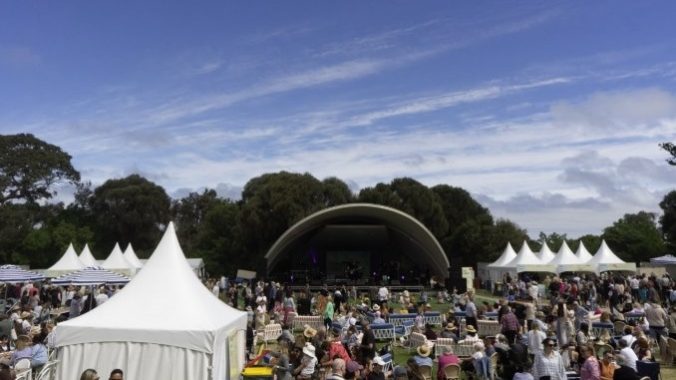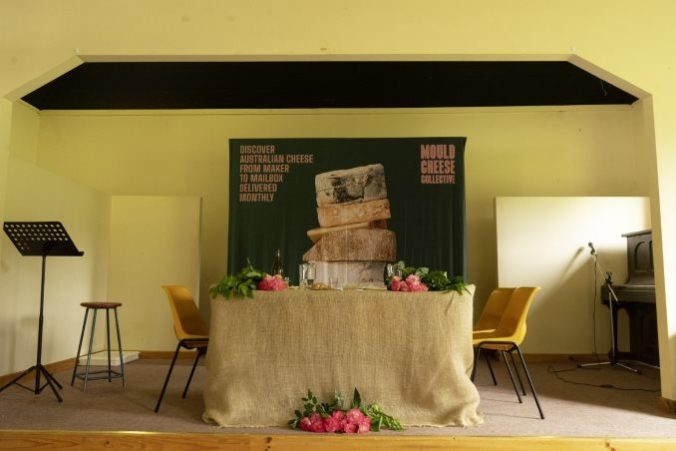Eating My Way Across The Melbourne Food And Wine Festival
Photos by John Sizemore
From March 15th through the 24th, the Melbourne Food and Wine Festival will showcase the extraordinary culinary talent from within the city and elsewhere around Victoria. Take it from me: as someone who enjoys cooking, grew up in the South, and has had the privilege of visiting several countries and living in cities with vibrant food scenes, I consider myself reasonably well-versed in cuisine, even if I’m hesitant to label myself a “foodie.”
That being said, I had yet to learn the extent of how good the food was in Australia. As someone who originally grew up on the other side of the world, my primary exposure to “Australian cuisine” was, embarrassingly enough, arguably my visits to Outback Steakhouse from childhood, which, to be honest, doesn’t count even a little bit. However, I had heard very high praise for the local food, especially within Melbourne, whether from friends who were city natives or fellow travelers who had once visited. In light of all this hype, I was a bit skeptical, as I usually am when I become aware of anything receiving this much praise. After a brisk 16-hour flight across the Pacific, I landed in Melbourne on a sunny November spring morning (seasons are flipped south of the Equator), ready to find out for myself within the regional version of the Melbourne Food and Wine Festival.
If you’re new to Australia, the first thing a lot of Melbournians will ask you is whether or not you’ve tried the coffee. Given that I was on the other side of the planet and entirely in the throes of my initial, surreal moments of jet lag, I decided the time was good to give the local beans a go. I entered the first coffee shop I found and ordered a “long black,” the Australian term for an Americano. I typically don’t add cream and sugar to my coffee, preferring to savor the full taste of the hearty beans. I let the bitter fumes waft into my nostrils as I took my first sip, my facial expression yielding to surprise by the richness of the flavor, and this was just one random place right on the street. This delight was more or less repeated for the rest of my time in Melbourne, whether my coffee was from one of the fancy shops ubiquitous in the city or from the no-frills street cafes. Every cup was top-notch, whether a long black, a flat white, or a “magic coffee,” a Melbourne classic that is a tasty double ristretto with steamed milk. The famous beverage is a peculiar sum of its parts—the creaminess of the milk is balanced out by the bitterness of the beans, allowing for a drink that goes down effortlessly. If you have to pick one brew to try when in Melbourne, this is the one.
Continuing this initial path of simply picking a direction and trying out whatever I found, I next stumbled across an Asian food market a few blocks away. I descended a few flights of stairs to discover an energetic food court with Thai, Vietnamese, Indonesian, and every other type of Southeast Asian cuisine imaginable. A Thai place on the side caught my eye, and before I knew it, I had a steaming hot plate of noodles in front of me. I love a good food court—the movements of hungry customers, the sounds of conversation, and, best of all, the combined smells of all the edible offerings were a nice, comfortable ambiance perfect for enjoying my meal.
For dinner, I stopped by Victoria by Farmer’s Daughters, located right on the banks of the Yarra River, which bisects Melbourne into northern and southern halves. It’s all in the name—the restaurant, whose meals are all locally produced and farm-to-table, would be a prelude towards my trip to Greater Victoria’s culinary treasures. I gorged on tasty delicacies like Great Ocean Road duck, BBQ lamb chops, Gippsland artisan cheeses, and Scotch fillets (what we know as a ribeye), all of which were incredible choices to fill my yearning, jet-lagged stomach while I enjoyed the pleasing view of the river.
There’s a lot of ground to cover regarding Melbourne’s food scene, and if you want a genuinely in-depth look, don’t miss the chance to book a tour with Foodie Trails. The tour not only covers the multicultural influence of Melbournian cuisine but also offers compelling context with stops at the Australian Immigration Museum and Koorie Heritage Trust, a mesmerizing indigenous art museum. I met Annalisa in my hotel’s lobby the following morning, who would start by guiding me through some history inside the central business distract. As we walked, I learned about not just the sizable impact of southeast Asia on Melbourne’s food scene but also the contributions that Italian and Greek immigrants have made over the years as well. We walked to the Block Arcade, whose outer facade was covered in an amusing series of beach-themed Christmas window decorations (again, Christmas is a summer holiday in this part of the world). I had desserts from Haigh’s, an Australian staple founded in Adelaide that has been making delectable chocolates for the past century. Next, we headed to Gewürzhaus Spice House, where it’s hard not to be immediately struck by the rainbow of multi-colored powders that catch the eye as soon as one enters. The seasonings covered the expected varieties suitable for chicken and seafood, and then there were the more unconventional and intriguing blends like the Melbourne Coffee Meat Rub and the Apple Cake Spice.
By this time the weather had improved, so after stopping at the Immigration Museum, we walked over to Fed Square, a public art space with a collection of funky, jagged modernist buildings and restaurants right on the Yarra. We got a table in the sun at Big Esso by Mabu Mabu, which would be my first experience with indigenous Australian food. I wasn’t quite sure what to expect ordering crocodile shanks, but for such a dangerous animal, they were very delicious. I rounded out my lunch with equally surprising and delightful emu filets and kangaroo tartare before we headed next door to the Koorie Heritage Trust. The indigenous art, covering a spectrum of elaborate masks and paintings signifying the more traditional to immersive light installations embodying the more modern, was a fantastic window into the local culture and creativity.
All this walking and exploring built up a sizable appetite, and for dinner that night, I walked to Lucy Liu Kitchen & Bar in the CBD (no relation to the famous actress). The Asian fusion restaurant’s dishes, an assortment of bite-size plates best enjoyed with good company, come with an entertaining concept—they can be mixed and matched according to the customer’s desires, or one can opt to “Let Lucy Choose,” where five or seven random plates are chosen at random by the staff. I decided that I wasn’t in a thinking mood that night, so I put myself in the hands of chance. An hour later, with a satisfied stomach filled with the various bits of prawn dumplings, scallop fried rice, caramelized tofu, pork buns, and tuna sashimi I had hungrily shoved into my mouth, it was hard to believe my choice was wrong.
The next day, I continued my culinary adventure, heading southeast out of Melbourne towards Gippsland, a beautiful, rolling smattering of green hills on the periphery of the central city, whose vibrant emerald colors, seeming more like something out of Ireland, effectively shattered my previously-held image of the conventional “hot, desert” outback Australia. The regional Melbourne Food and Wine Festival would be taking place in the various towns here in Gippsland, many of which are known for their outstanding farming and dairy, whose byproducts fuel many of Melbourne’s finest restaurants. I would soon get my first taste of Gippsland within the unassuming town of Kongwak.

I pulled up at the Kongwak Town Hall, where the “Soft, Semi, Hard, Stinky” panel would be underway (this event will be happening again on March 21st in Collingwood) put on by the Mould Cheese Collective. I sat down at an empty table section and was thrilled to discover that in front of every chair was a visually pleasing plate of assorted cheeses with ample bread to enjoy them with. Cheese usually tends to be a good thing in most situations, so I happily nibbled as I listened to the fascinating panel of noteworthy cheese makers from places such as Prom Country Cheese, Berry’s Creek, Butterfly Factory, and Tarago River discuss the finer points of dairy production and how to extract maximum flavor into their famed fromage. The cheese was more than excellent—I found myself trying to conceal the ravenous zeal with which I consumed my plate and, greedily wanting to feast on the plates in front of the empty chairs next to me, I waited for what I believed to be a sufficient length of time before I surreptitiously made my move and grabbed the unclaimed plates with no regrets.
-

-

-

-

-

-

-

-

-

-

-

-

-

-

-

-

-

-

-

-

-

-

-

-

-

-

-

-

-

-

-

-

-

-

-

-

-

-

-

-








































